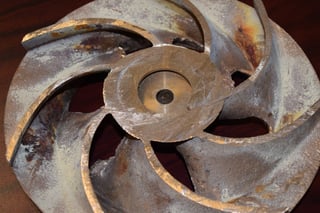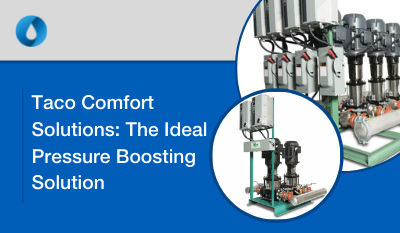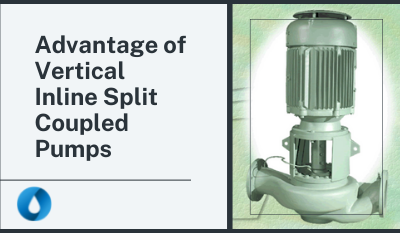 Cavitation happens when bubbles form in a fluid when the pressure drops quickly below vapor pressure. When the bubbles experience higher pressure, they collapse. This causes small shockwaves that can cause severe damage for the pumps. Even if you don't know anything about HVAC pumps, you would probably think this is a bad thing. You would be right!
Cavitation happens when bubbles form in a fluid when the pressure drops quickly below vapor pressure. When the bubbles experience higher pressure, they collapse. This causes small shockwaves that can cause severe damage for the pumps. Even if you don't know anything about HVAC pumps, you would probably think this is a bad thing. You would be right!
What causes cavitation?
Many think that it is air moving through the pump. While that is a separate cause for concern, that is NOT cavitation.
Cavitation occurs when the suction pressure drops below the flash point of water. In other words, at the inlet eye of the impeller (the lowest pressure point in the pump) the pressure may drop so low that the water flashes to steam. As this steam bubble moves along the impeller vanes to the outside of the wheel (the highest pressure point) it condenses back into liquid water. This phase change from steam to water is extremely violent and exerts a tremendous amount of force on the impeller. Over time, the impeller material wears away, causing imbalances and eventually failure of the pump and its ability to move water. If you have ever seen an impeller (bronze or stainless steel) damaged by cavitation, it looks as though it had been pumping acid and the material is just eaten away.
Pump cavitation occurs when there is insufficient water pressure at the inlet. Centrifugal pumps used in HVAC systems do not pull water in; instead, they push water. A certain amount of water pressure must be present at the suction side of the pump to ensure cavitation does not occur. This might be called a “flooded suction." The pressure required at the pump suction may be found on its published pump curve and represented by the NPSHr (Net Positive Suction Head required) line.
How do you know if your pump is cavitating?
Ever heard the term “pumping rocks?" That is typically what a cavitating pump sounds like. It sounds like rocks are moving through and banging around inside the pump.
How can you prevent pump cavitation?
To safeguard your HVAC pumps against cavitation in closed-loop piping systems, ensure your PRV setting is sufficient to maintain positive pressure throughout the piping system. In open systems, such as condenser water piping loops, ensure the pump suction is below the cooling tower basin and that there are no inverted “U’s” in the suction piping that might hinder flow to the pump. Clogged strainers on pump suctions in both systems are also a common cause of cavitation. Check any air separators, suction diffusers, and y-strainers for obstructions.
There is a type of cavitation that is not necessarily associated with insufficient pump inlet pressures, and it has to do with radial thrust. A topic for another blog, radial thrust occurs when the pump operates outside its published operating range. At these conditions, the pressures within the volute (wet end) of a single suction centrifugal pump become imbalanced. Low pressure pockets may form, and may cause cavitation. In these conditions, the imbalanced pressures are a more immediate threat to the pump than the cavitation, causing bearing and seal failures in short order. You can witness this in any pump by throttling its discharge valve near and to the point of shut-off, which is okay for brief testing, but harmful if allowed to continue.
Ensuring sufficient pressure at the pump suction will keep it operating happily for a long time. For help with your system, contact your local Heat Transfer Sales representative for an onsite consultation.
This post was originally published in 2016 and has been re-written with updates.
Blog image property of Heat Transfer Sales

.png)

.png)




Submit a Comment